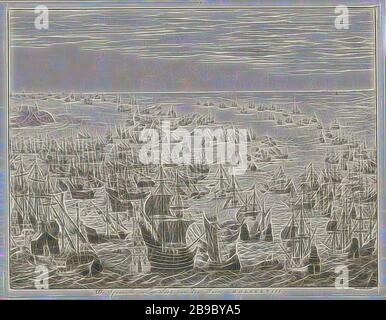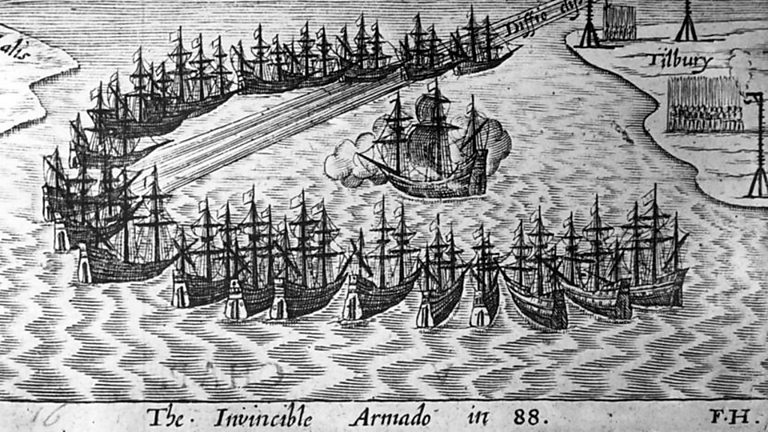

Major fleet actions were extremely rare and proved less decisive. The Allied Powers, with their larger fleets and surrounding position, largely succeeded in their blockade of Germany and the other Central Powers, whilst the efforts of the Central Powers to break that blockade, or to establish an effective counter blockade with submarines and commerce raiders, were eventually unsuccessful. « Sir Francis Drake’s attack on St.Naval warfare in World War I was mainly characterized by blockade. Here, the English, on the left, face the assembled Spanish ships, on the right, in the English Channel. The English artist, Robert Adams, provided ten illustrations showing the positions of the two fleets and their actions in July and August. This map was created in 1590 to accompany A Discourse Concerninge the Spanishe Fleete Invadinge Englande in the Yeare 1588, by Petruccio Ubaldini. Whether the Europeans sought territory, gold, souls, or national pride, the Americas became a new arena for the ongoing battles for dominance in Europe that were now spreading around the globe. Such imperial rivalries in Europe greatly influenced how Europeans perceived and interacted with the Americas and the native peoples. What remained of the badly damaged Spanish fleet returned to Spain by sailing up through the North Sea, around the British Isles, and into the Atlantic. On August 8, the fighting culminated in the Battle of Gravelines, in which the English navy decisively defeated the Armada. The Spanish fleet entered the English Channel on July 30, and the two sides engaged in skirmishes for the next few days as the Spanish moved north. England meanwhile, led by Queen Elizabeth I, readied a counterforce of 197 vessels, 16,000 men, and 2,000 guns.

Philip’s Spanish Armada of 124 ships, 27,000 men, and 1,100 guns departed from Lisbon on May 30, 1588.

In 1588, Spain’s King Philip II ordered a naval invasion of England. In the 1570s and 1580s, Sir Francis Drake led English attacks on Spanish vessels and raided Spanish settlements in the Americas. The rivalry between Spain and England grew throughout the late sixteenth century.


 0 kommentar(er)
0 kommentar(er)
